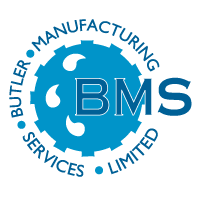Sewage Parameters 5 Part 2: Ammonia (NH4)
Introduction
Continuing our exploration of sewage parameters, today’s topic is Ammonia (NH₄) and its removal from wastewater. Ammonia, a form of nitrogen, is a significant nutrient in wastewater and a major contributor to environmental issues such as eutrophication, algae blooms, and fish kills when released untreated into watercourses.
Why Remove Ammonia?
The presence of nutrients like nitrogen in wastewater leads to over-enrichment of receiving environments, which can cause:
Explosive plant growth and algae blooms.
Deoxygenation of water.
Fish kills and other ecological damage.
For this reason, ammonia removal is now a routine requirement in sewage treatment.
The Process: Nitrification
Nitrification is the aerobic biological process that converts Ammonia (NH₄) into Nitrate (NO₃).
Two-Stage Process:
Stage 1: Ammonia (NH₄) → Nitrite (NO₂)
Stage 2: Nitrite (NO₂) → Nitrate (NO₃)
Nitrifying Bacteria:
More sensitive to environmental conditions than carbonaceous bacteria.
Separate Treatment Stage:
Due to their sensitivity, nitrification is typically designed as a separate aerobic stage after the main BOD removal process.
Application in Package Sewage Treatment
For a BMS Blivet, nitrification involves:
Additional Aerobic Stage:
Ammonia Concentrations:
Domestic sewage influent typically contains ~40 mg/l of NH₄.
However, concentrations can vary:
Lower water usage areas may see concentrations up to 100 mg/l (e.g., in French villages).
Design Considerations
Aerobic Capacity:
Ammonia removal requires 3–4 times the aerobic capacity needed for BOD removal.
Cold and Temperate Climates: Use a factor of 4.
Warm and Hot Climates: Use a factor of 3.
In cold climates, additional insulation and heating may be required to maintain liquor temperatures above 8°C.
Temperature Sensitivity:
Nitrification efficiency drops significantly at low temperatures.
Proportional Design:
The size of the additional aerobic stage must be proportional to the amount of ammonia requiring removal.
What’s Next?
In the next installment, we’ll provide examples of calculations to determine the additional treatment capacity needed for Nitrification (Ammonia NH₃ removal).
Questions?
If you have any queries or specific topics you’d like us to explore, feel free to reach out. We’re here to help!
About BMS
BMS is a quality manufacturer of package products for wastewater and stormwater treatment:
Established: 1986
Global Reach: Exported to over 50 countries.
Family Business: A third-generation company with deep expertise.
BMS Product Range
BMS provides a wide array of surface water and wastewater treatment products, including:
View the full product catalogue here
Additional Services by BMS
Free Design Service: For sewage treatment, pump stations, and surface water management.
Operation and Maintenance: Full services for existing installations, including repair, advice, and testing.
Free CPD Presentations: Available for sewage treatment and surface water management, delivered at your location.
We would be delighted to discuss any requirements you might have, and we are available to meet you at your convenience. Contact us today.
© Butler Manufacturing Services 2024.

